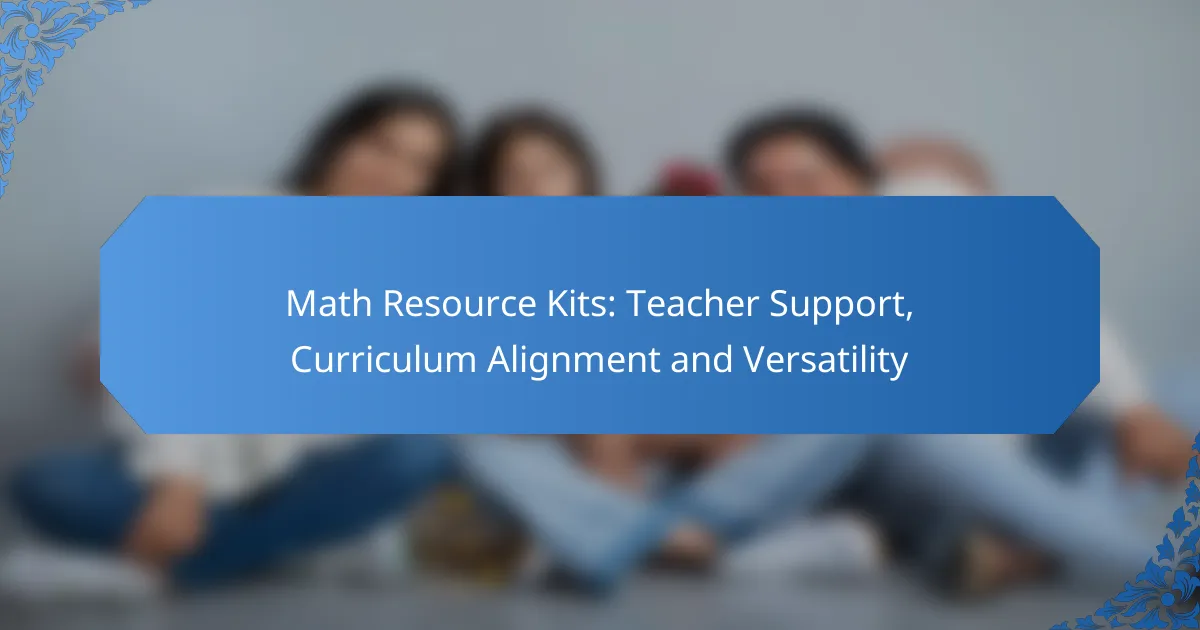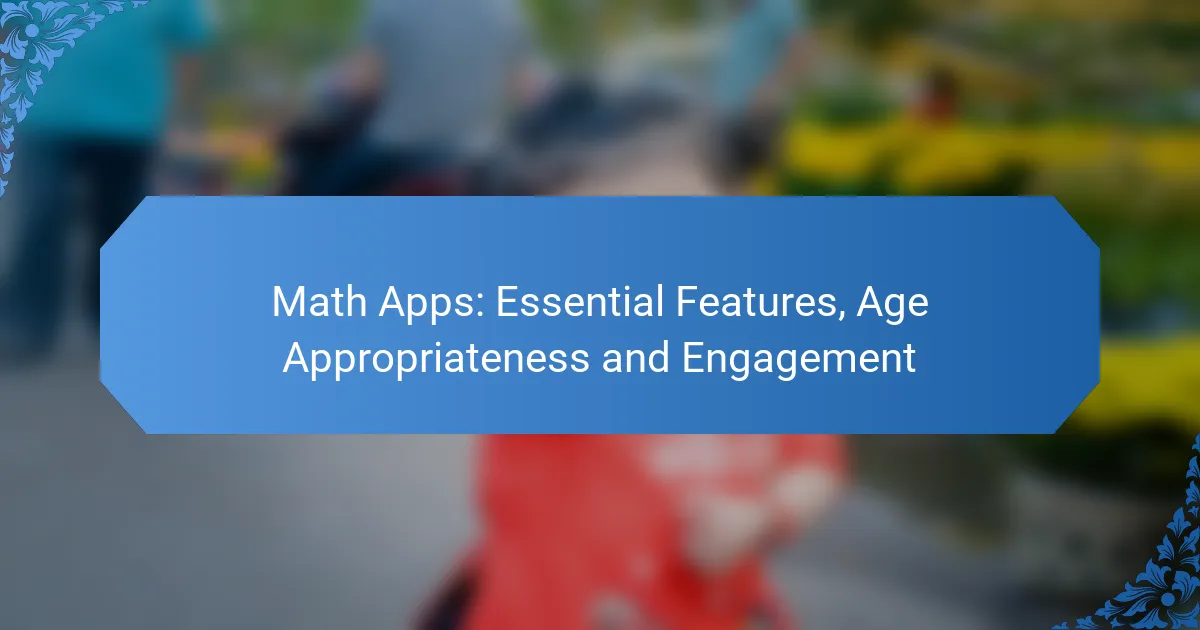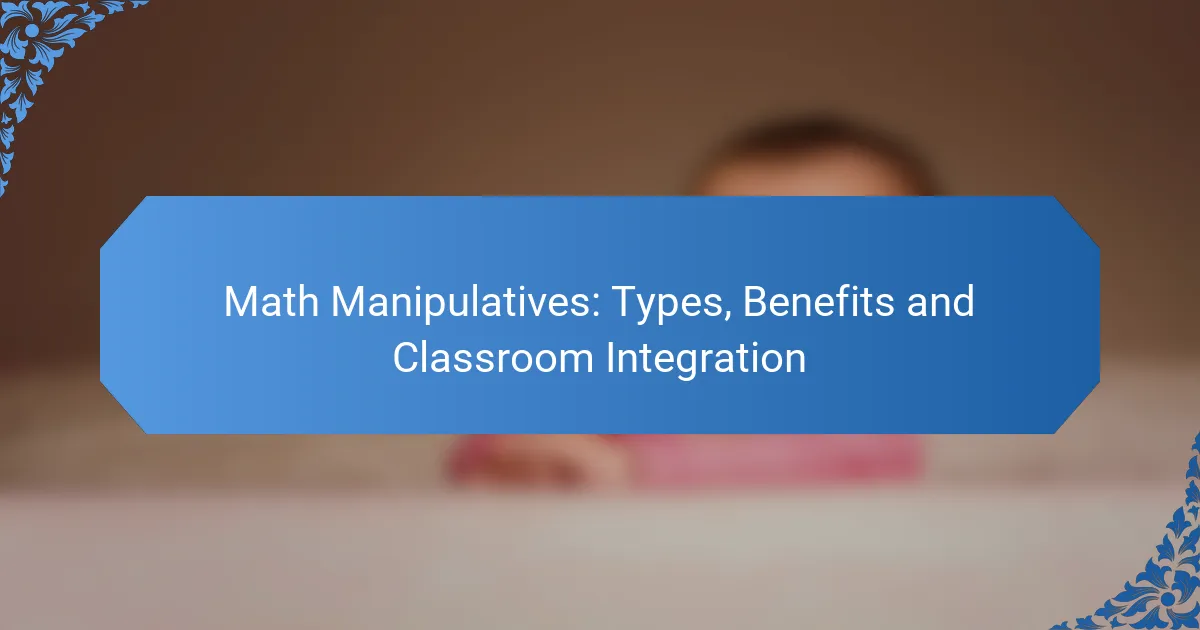Math resource kits are essential tools for educators, designed to enhance student engagement while aligning with curriculum standards. These versatile kits offer a variety of materials and teaching methods that cater to different learning styles, ensuring that all students can effectively grasp mathematical concepts. By providing resources that meet specific educational objectives, these kits empower teachers to deliver impactful lessons in diverse classroom settings.
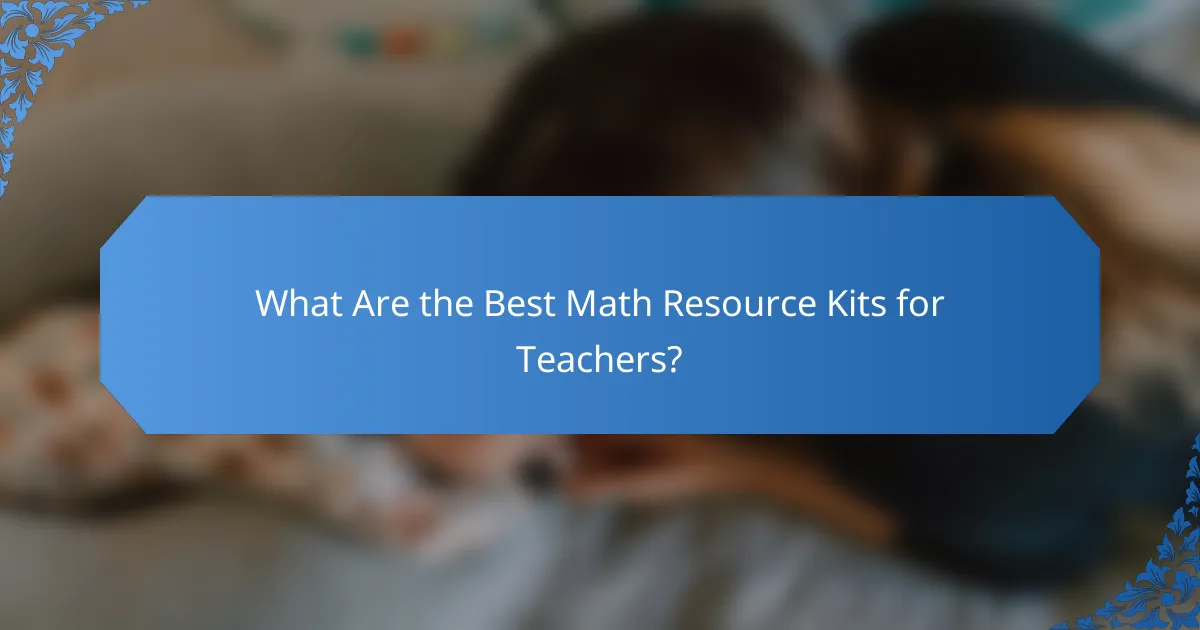
What Are the Best Math Resource Kits for Teachers?
The best math resource kits for teachers are those that enhance student engagement, align with curriculum standards, and offer versatility in teaching methods. These kits typically include a variety of materials and tools designed to support different learning styles and objectives.
Math Learning Center Kits
Math Learning Center Kits provide a comprehensive set of resources that help teachers deliver lessons on fundamental math concepts. These kits often include visual aids, interactive activities, and digital resources, making them suitable for various grade levels.
When selecting a Math Learning Center Kit, consider the range of topics covered, such as number sense, operations, and geometry. Look for kits that offer manipulatives and digital components to cater to both in-person and remote learning environments.
Hands-On Equations Kits
Hands-On Equations Kits are designed to teach algebraic concepts through physical manipulatives. These kits typically include game-like components that allow students to solve equations using visual and tactile methods.
Teachers should look for kits that provide clear instructional guides and student-friendly materials. These kits can be particularly effective for students who struggle with abstract algebra concepts, as they bridge the gap between concrete and abstract thinking.
Math Manipulatives Kits
Math Manipulatives Kits consist of physical objects that help students understand mathematical concepts through hands-on experience. Common items in these kits include blocks, counters, and measuring tools.
When choosing a Math Manipulatives Kit, ensure it covers a variety of topics such as addition, subtraction, and fractions. Kits that include a variety of manipulatives can cater to different learning styles and enhance student engagement.
STEM Resource Kits
STEM Resource Kits integrate math with science, technology, engineering, and math education. These kits often include project-based learning activities that encourage critical thinking and problem-solving skills.
Look for STEM kits that align with local curriculum standards and provide comprehensive lesson plans. These kits can be particularly beneficial for fostering collaborative learning and real-world application of math concepts.
Common Core Aligned Kits
Common Core Aligned Kits are specifically designed to meet the standards set by the Common Core State Standards Initiative. These kits ensure that the materials and activities are relevant to the skills and knowledge students are expected to acquire.
When selecting a Common Core Aligned Kit, verify that it covers the appropriate grade-level standards and includes assessments to track student progress. Kits that offer a variety of teaching strategies can help address diverse classroom needs effectively.
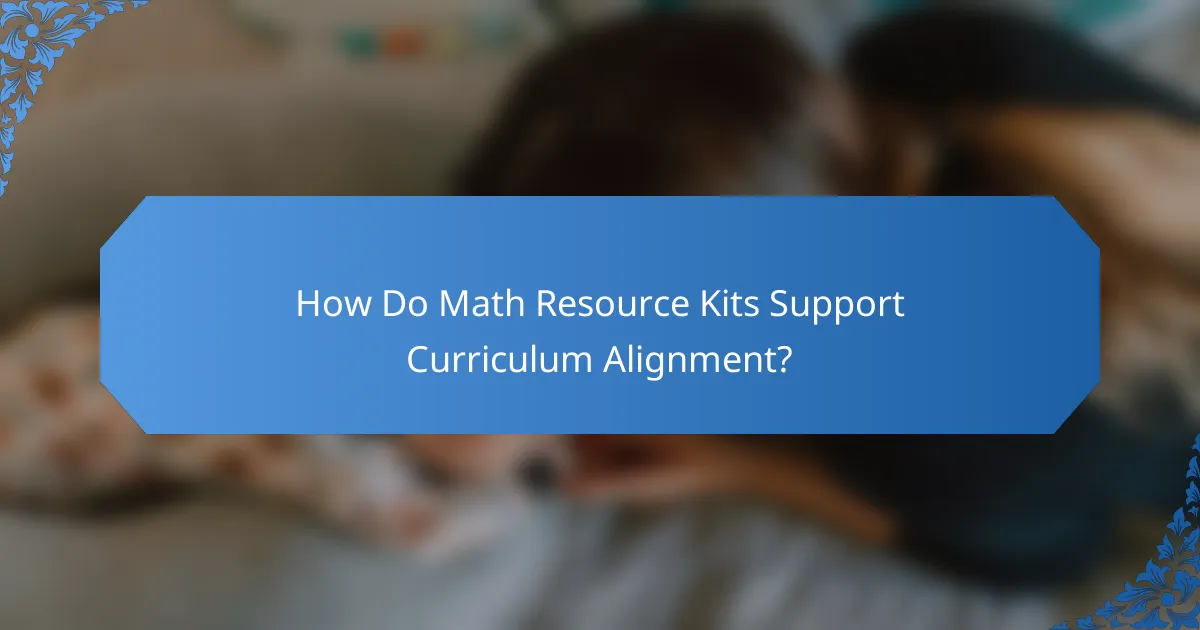
How Do Math Resource Kits Support Curriculum Alignment?
Math resource kits are designed to enhance curriculum alignment by providing educators with tools and materials that directly correspond to educational standards. These kits ensure that teachers can effectively deliver lessons that meet specific learning objectives and benchmarks.
Standards-Based Alignment
Standards-based alignment ensures that math resource kits are developed in accordance with national and state educational standards, such as the Common Core State Standards in the U.S. This alignment helps educators identify which resources are suitable for their curriculum and how they can be integrated into their teaching practices.
When selecting resource kits, teachers should verify that the materials explicitly reference the relevant standards. This can include worksheets, manipulatives, and digital resources that facilitate skill development aligned with grade-level expectations.
Grade-Level Specific Resources
Math resource kits often include grade-level specific materials that cater to the unique learning needs of students at different stages. For example, kits for early elementary grades may focus on foundational skills like addition and subtraction, while those for higher grades might cover algebra and geometry concepts.
Educators should choose kits that provide a range of resources appropriate for their specific grade level, ensuring that the materials are neither too advanced nor too simplistic. This targeted approach helps maintain student engagement and promotes effective learning outcomes.
Integration with Lesson Plans
Integration of math resource kits with lesson plans is crucial for maximizing their effectiveness. Teachers can incorporate these resources into existing lesson structures, providing hands-on activities that reinforce theoretical concepts.
To facilitate this integration, educators should review the contents of the kits and identify key activities that align with their lesson objectives. Creating a checklist of essential resources and corresponding lesson goals can streamline this process, ensuring that all materials are utilized effectively.
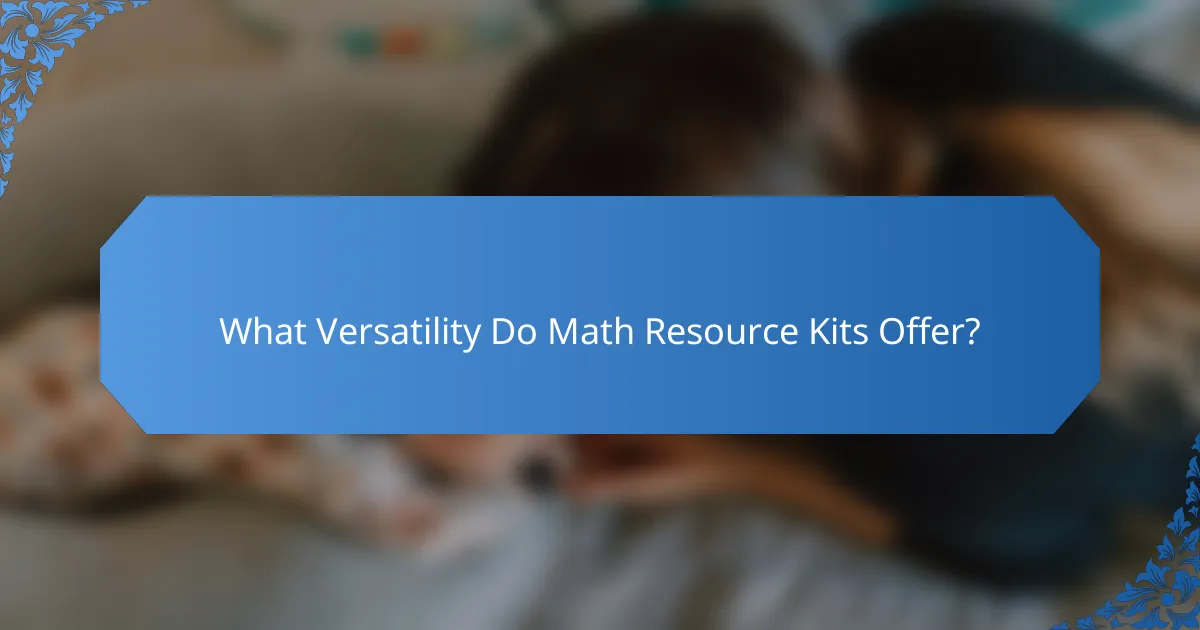
What Versatility Do Math Resource Kits Offer?
Math resource kits provide a wide range of tools and materials that cater to diverse teaching and learning needs. Their versatility allows educators to adapt lessons for various learning styles, classroom environments, and even remote settings, ensuring that all students can engage with mathematical concepts effectively.
Adaptability for Different Learning Styles
Math resource kits are designed to accommodate various learning preferences, such as visual, auditory, and kinesthetic styles. For instance, visual learners benefit from manipulatives and visual aids, while auditory learners may thrive with interactive discussions and audio resources. Kinesthetic learners can engage with hands-on activities that allow them to physically manipulate objects to understand mathematical concepts.
To effectively utilize these kits, teachers should assess their students’ learning styles and select appropriate resources. For example, using a combination of visual aids and hands-on activities can enhance understanding for a broader range of students.
Use in Various Classroom Settings
These resource kits are versatile enough to be used in different classroom settings, whether in traditional classrooms, special education environments, or small group settings. They can be tailored to fit the specific needs of the classroom, allowing for differentiated instruction that meets the diverse abilities of students.
For example, in a traditional classroom, a teacher might use group activities with manipulatives, while in a special education setting, the same resources can be adapted for one-on-one instruction. This flexibility helps ensure that all students have access to the same core mathematical concepts, regardless of their learning environment.
Support for Remote Learning
Math resource kits are also beneficial for remote learning, providing students with the necessary tools to engage with math concepts outside the classroom. Many kits include digital resources, printable materials, and instructional videos that can be accessed from home, making it easier for students to continue their learning journey.
To maximize effectiveness, teachers should provide clear instructions on how to use the resources at home. Additionally, incorporating online platforms for collaboration and discussion can enhance the remote learning experience, allowing students to share their work and receive feedback from peers and educators.

What Are the Key Features of Effective Math Resource Kits?
Effective math resource kits are designed to enhance teaching and learning by providing interactive materials, comprehensive teacher support, and robust assessment tools. These features work together to align with curriculum standards and meet diverse classroom needs.
Interactive Components
Interactive components are essential for engaging students in the learning process. These may include hands-on manipulatives, digital tools, and games that encourage active participation. For instance, using physical blocks or virtual simulations can help students visualize mathematical concepts.
When selecting interactive components, consider their versatility and adaptability to various learning styles. Kits that offer a mix of tactile and digital resources can cater to both kinesthetic and visual learners, making math more accessible.
Teacher Guides and Support
Comprehensive teacher guides are critical for maximizing the effectiveness of math resource kits. These guides typically include lesson plans, instructional strategies, and tips for differentiating instruction based on student needs. A well-structured guide can save teachers time and enhance their confidence in delivering complex content.
Additionally, ongoing support through professional development workshops or online resources can further empower educators. Look for kits that offer training sessions or access to a community of educators for sharing best practices and troubleshooting challenges.
Assessment Tools
Assessment tools are vital for measuring student progress and understanding. Effective math resource kits often include formative and summative assessment options, such as quizzes, performance tasks, and rubrics. These tools help teachers identify areas where students excel or struggle, allowing for timely interventions.
When evaluating assessment tools, consider their alignment with curriculum standards and their ability to provide actionable feedback. Tools that offer immediate results can help educators adjust their teaching strategies quickly, ensuring that all students stay on track.

How to Choose the Right Math Resource Kit?
Choosing the right math resource kit involves aligning it with curriculum standards, understanding student needs, and considering budget constraints. A well-selected kit can enhance teaching effectiveness and student engagement.
Consider Curriculum Standards
When selecting a math resource kit, ensure it aligns with local curriculum standards, such as the Common Core in the United States or the National Curriculum in the UK. This alignment guarantees that the materials support the learning objectives set for each grade level.
Review the specific topics and skills outlined in the standards to confirm that the kit covers essential areas like number sense, operations, and problem-solving. A mismatch can lead to gaps in student learning and hinder overall progress.
Evaluate Student Needs
Assessing student needs is crucial for choosing a math resource kit that caters to diverse learning styles and abilities. Consider factors such as varying levels of proficiency, language skills, and special education requirements.
Utilize tools like surveys or assessments to gauge student understanding and preferences. This information will help you select resources that are engaging and appropriately challenging, fostering a supportive learning environment.
Assess Budget Constraints
Budget constraints play a significant role in the selection of math resource kits. Determine your available funding and explore options that fit within those limits while still meeting educational goals. Kits can range from affordable to premium pricing, so it’s essential to find a balance.
Consider bulk purchasing or district-wide agreements to reduce costs. Additionally, look for grants or funding opportunities that may be available for educational resources, ensuring you maximize your budget’s impact on student learning.
